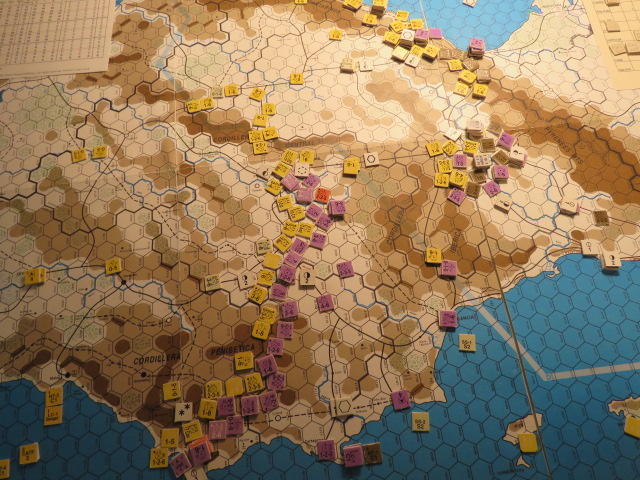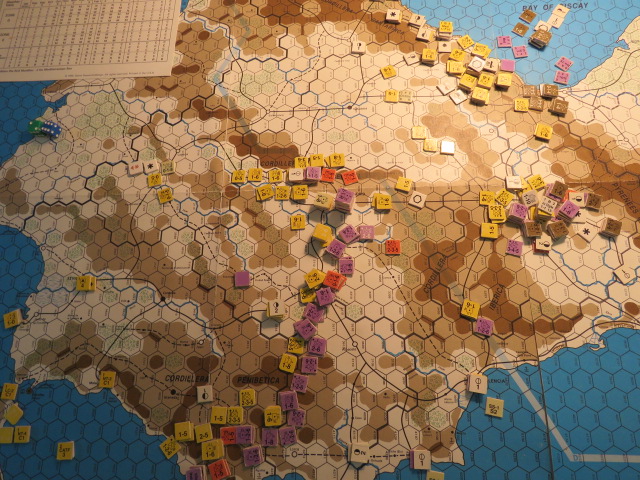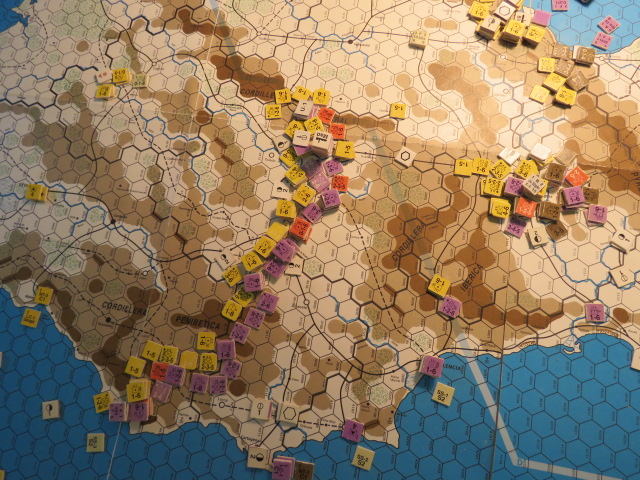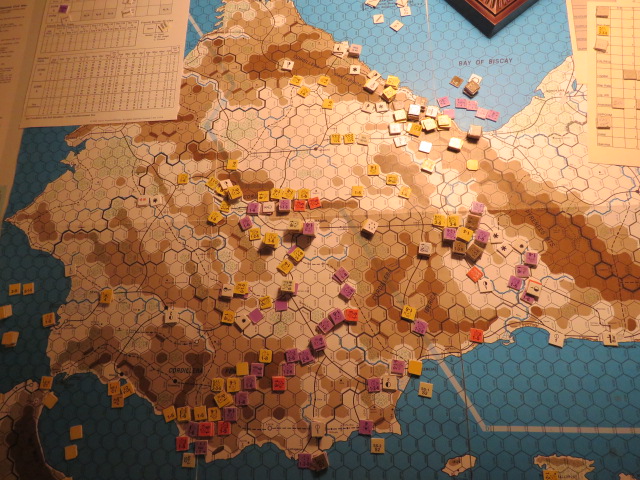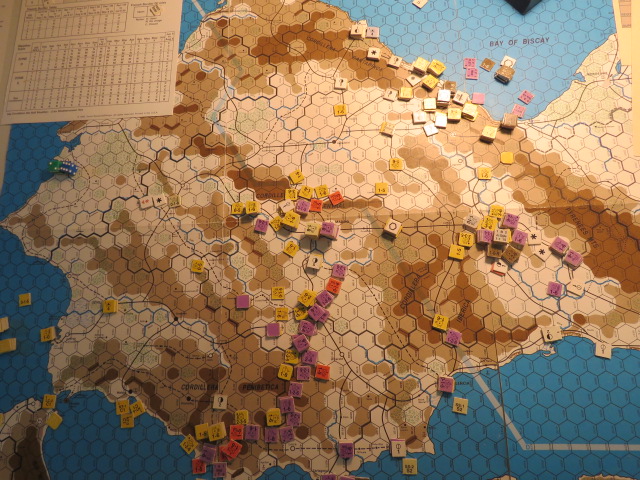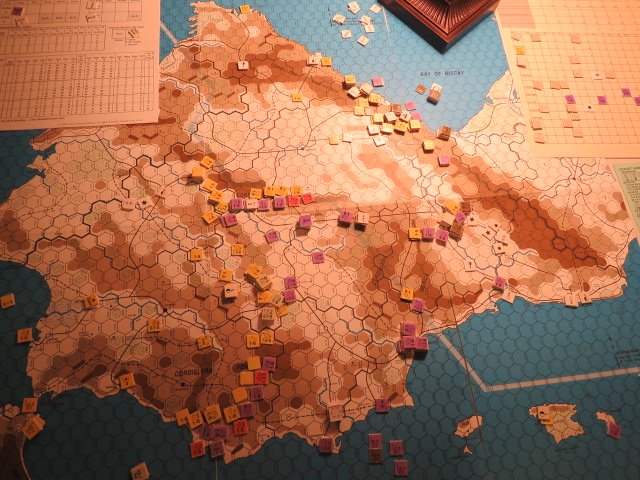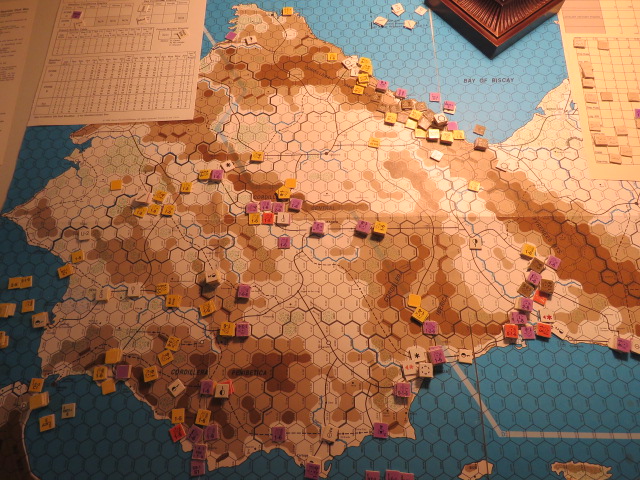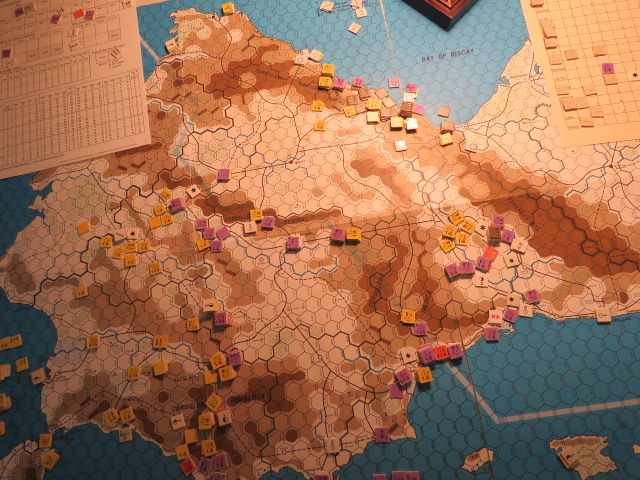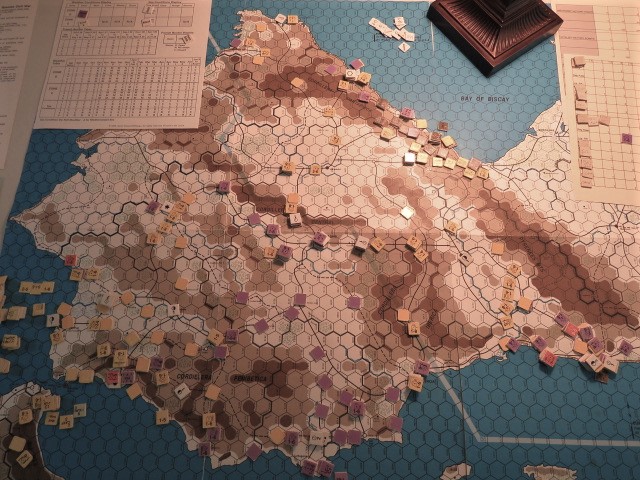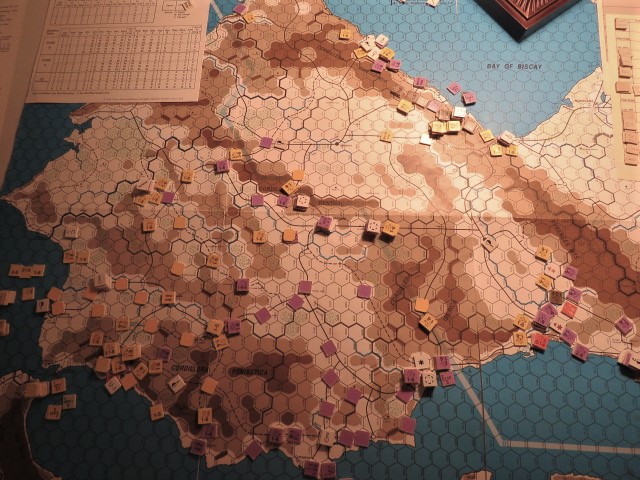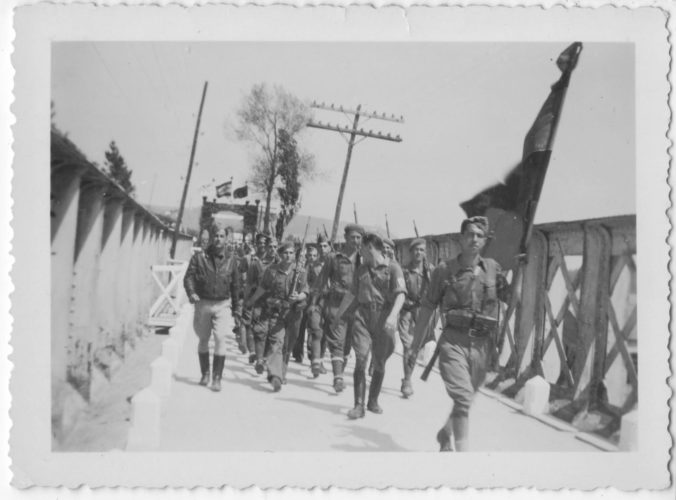Editors Note:
This corrected OB is the result of historical research by its Author, Carlos Perez, as well as an imbalance in FWtBT as published, wehre the nothern goubernitos are vulnerable to the “Asturian Gambit”, in which the Insurgent Player, guided by the hindsight knowledge that the Loyalist Forces have limited mobility and capabilities in the first turns of the game, tries to knock out the northern goubernitos before they finish mobilisation. In the confused and chaotic first weeks of the Insurgency such a strategy would have bordered on the lunatic, since all sides were squarely concentrated on taking or holding Madrid as the center of political power. While this making sense in terms of a struggle both players know will most likely take years to resolve, and legal according to the rules, it is nevertheless a strategy not available to the historical actors. Should these OB variations not resolve the issue, a Grest War “Plan XVII”-rule should be considered.
This article appeared in the bulletin El Miliciano , nr. 5 (1996)
BASQUE FORCES
Regular reinforcements
JUL II 36
Bilbao (23A: 1701) or San Sebastián (33: 1932):
2x 1-2-4 Inf X 1, 2 (Bas)
AUG I 36
Bilbao (23A: 1701) or San Sebastián (33: 1932):
1x 0-1-4 Cons X 1 (Bas)
1x 1-pt Task Force LtTF-1 (Bas)
Garrison of Euskadi, available:
2x 1-4 Inf X 3, 4 (Bas)
1x 0-1-4 Cons X 2 (Bas)
Join the General Section of Reem installments:
1x 0-1-6 Mortar III Ortiz (Bas)
SEP I 36
Garrison of Euskadi, activate:
2x 1-4 Inf X 3, 4 (Bas)
Garrison of Euskadi, available:
4x 1-2-4 Inf X 5, 6, 7, 8 (Bas)
OCT I 36
Bilbao (23A: 1701) or San Sebastián (33: 1932):
1x 1-6 Eng III 1 (Bas)
Garrison of Euskadi, activate:
2x 1-2-4 Inf X 5, 6 (Bas)
1x 0-1-4 Cons X 2 (Bas)
Garrison of Euskadi, available:
3x 1-2-4 Inf X 9, 10, 11 (Bas)
1x 1-4 Inf X 12 (Bas)
Join the General Replacement Section:
1x 1-8 Tank II N (Bas)
1x 1-6 Art III 14 (Bas)
NOV I 36
Bilbao (23A: 1701) or San Sebastián (33: 1932):
1x 1-6 Eng III 2 (Bas)
Garrison of Euskadi, activate:
2x 1-2-4 Inf X 7, 8 (Bas)
Garrison of Euskadi, available:
3x 2-4 Inf X 13, 14, 15 (Bas)
DEC I 36
Garrison of Euskadi, activate:
2x 1-2-4 Inf X 9, 10 (Bas)
Garrison of Euskadi, available:
1x 1-4 Inf X 16 (Bas)
Garrison of Euskadi, form:
2x 3-4-4 * Inf XX 3, 4 (Bas)
2x 2-3-4 * Inf XX 1, 2 (Bas)
Join the General Replacement Section:
1x 1-6 Art III 17 (Bas)
JAN I 37
Bilbao (23A: 1701):
1x 1-6 lt Tank III CAO (Bas)
Garrison of Euskadi, activate:
1x 2-4 Inf X 13 (Bas)
1x 1-2-4 Inf X 11 (Bas)
1x 1-4 Inf X 12 (Bas)
Garrison of Euskadi, form:
1x 2-3-4 * Inf XX 5 (Bas)
FEB I 37
Garrison of Euskadi, activate:
2x 2-4 Inf X 14, 15 (Bas)
1x 1-4 Inf X 16 (Bas)
MAR I 37
Garrison of Euskadi, activate:
2x 3-4-4 * Inf XX 3, 4 (Bas)
2x 2-3-4 * Inf XX 1, 2 (Bas)
Garrison of Euskadi, available:
1x 2-4º Inf XX 6 (Bas)
APR I 37
Bilbao (23A: 1701) or San Sebastián (33: 1932)
1x 1-8 Pole III Ert (Bas)
MAY I 37
Garrison of Euskadi, activate:
1x 2-3-4 * Inf XX 5 (Bas)
JUN I 37
Garrison of Euskadi, activate:
1x 2-3-4 * Inf XX 6 (Bas)
INITIAL FORCES, APR I 37
Active Army
Army of the North
Anywhere in Euskadi:
Add
9x 1-2-4 Inf X 1, 2, 5, 6, 7, 8, 9, 10, 11 (Bas)
Delete:
4x 1-4 Inf X 5, 6, 7, 8 (Bas)
1x 1-8 Police III Ert (Bas)
ASTURIAN FORCES
Regular reinforcements
JUL II 36
Gijón (23A: 1006) or Oviedo (23A: 1007):
2x 1-2-4 Inf X 1, 2 (Ast)
1x 1-4 Inf X 3 (Ast)
AUG I 36
Gijón (23A: 1006) or Oviedo (23A: 1007):
1x 1-2-4 Inf X Di (Ast)
1x 0-1-4 Cons X 1 (Ast)
Garrison of Asturias, available:
8x 1-4 Inf X 4, 5, 6, 7, 8, 9, 10, 11 (Ast)
Join the General Replacement Section:
1x 1-6 Art III AD (Ast)
SEP I 36
Garrison of Asturias, activate:
4x 1-4 Inf X 4, 5, 6, 7 (Ast)
Garrison of Asturias, available:
1x 1-6 Eng X 1 (Ast)
OCT I 36
Garrison of Asturias, activate:
4x 1-4 Inf X 8, 9, 10, 11 (Ast)
Garrison of Asturias, available:
1x 1-4 Inf X 12 (Ast)
1x 0-1-4 Cons X 2 (Ast)
NOV I 36
Garrison of Asturias, activate:
1x 1-6 Eng III 1 (Ast)
Garrison of Asturias, available:
2x 1-2-4 Inf X 13, 14 (Ast)
1x 1-6 Inf X 1 Exp (Ast)
1x 1-6 Eng III 2 (Ast)
Join the General Replacement Section:
1x 1-6 Art III 16 (Ast)
DEC I 36
Garrison of Asturias, activate:
1x 1-4 Inf X 12 (Ast)
Garrison of Asturias, form:
1x 3-4-4 * Inf XX 3 (Ast)
3x 2-3-4 * Inf XX 1, 2, 4 (Ast)
JAN I 37
Garrison of Asturias, activate:
1x 3-4-4 * Inf XX 3 (Ast)
3x 2-3-4 * Inf XX 1, 2, 4 (Ast)
2x 1-2-4 Inf X 13, 14 (Ast)
1x 1-6 Eng III 2 (Ast)
1x 0-1-4 Cons X 2 (Ast)
Garrison of Asturias, available:
1x 3-4 º Inf XX 5 (Ast)
1x 1-6 Inf X 2 Exp (Ast)
FEB I 37
Garrison of Asturias, activate:
1x 3-4-4 * Inf XX 5 (Ast)
Garrison of Asturias, available:
2x 2-4º Inf XX 6, 7 (Ast)
2x 1-6 Inf X 3 Exp, 4 Exp (Ast)
MAR I 37
Garrison of Asturias, activate:
2x 2-3 4 * Inf XX 6, 7 (Ast)
APR I 37
Garrison of Asturias, activate:
4x 1-6 Inf X 1 Exp, 2 Exp, 3 Exp, 4 Exp (Ast)
